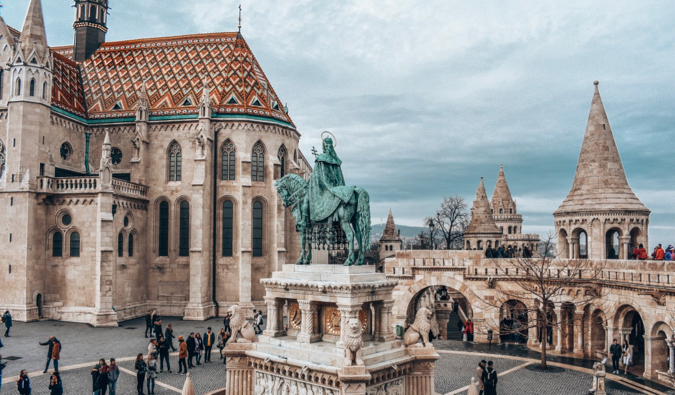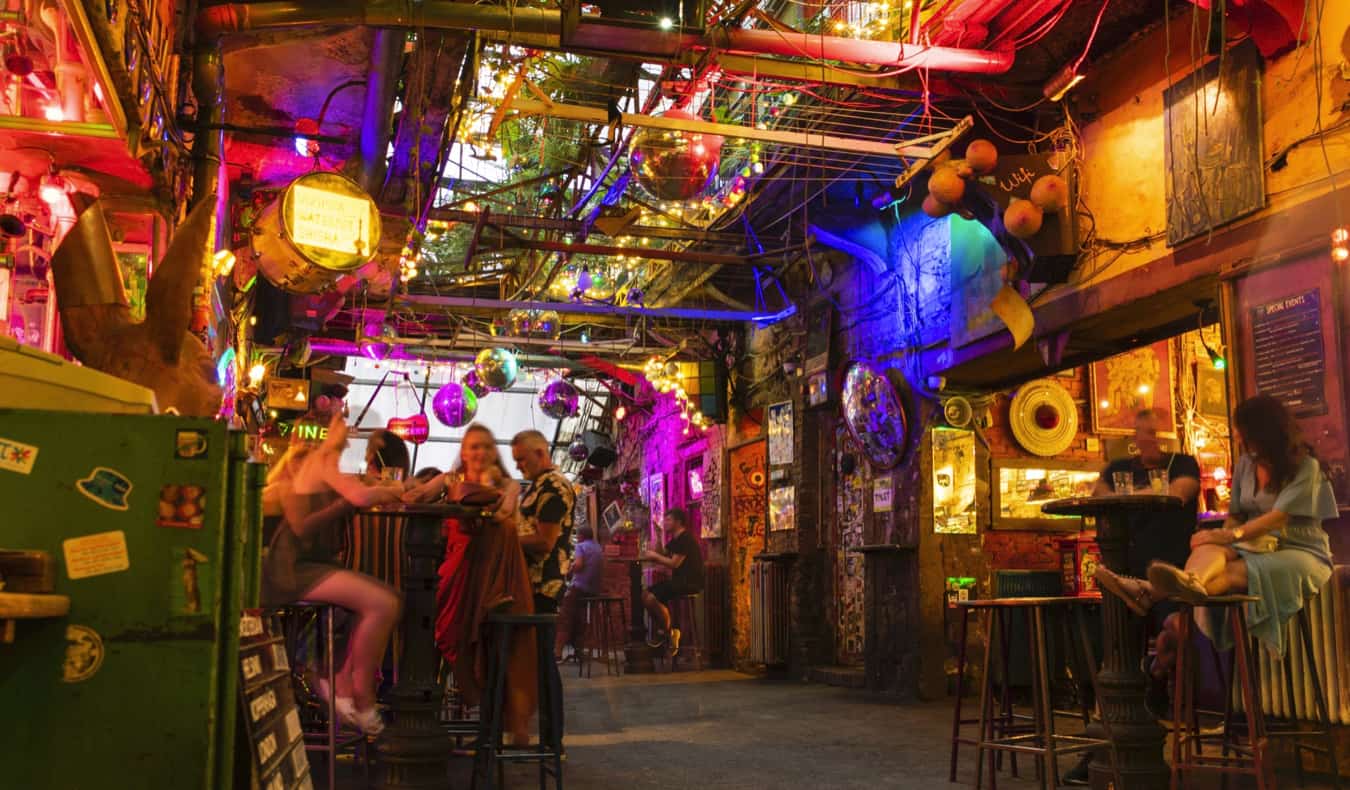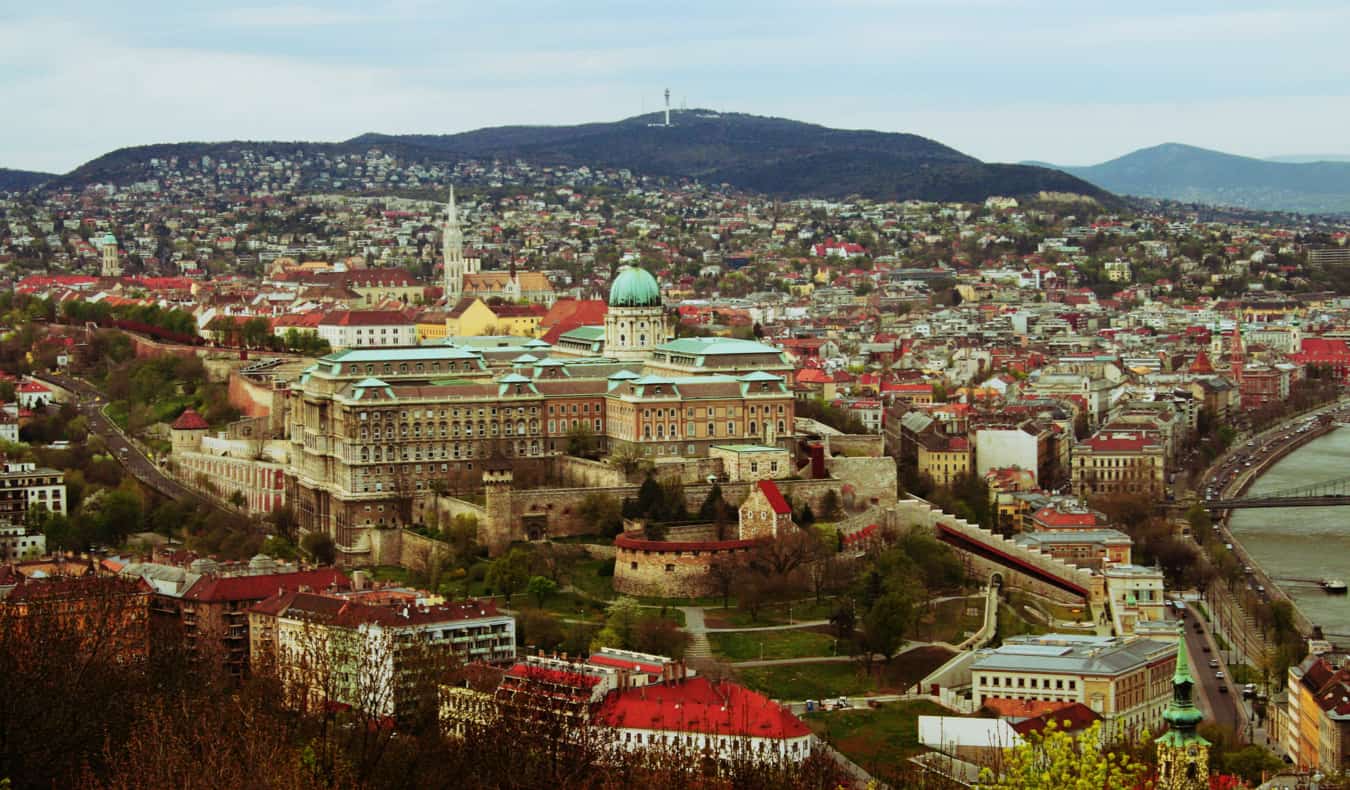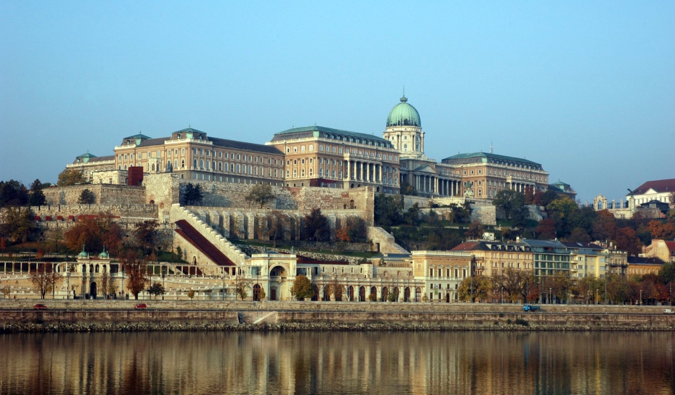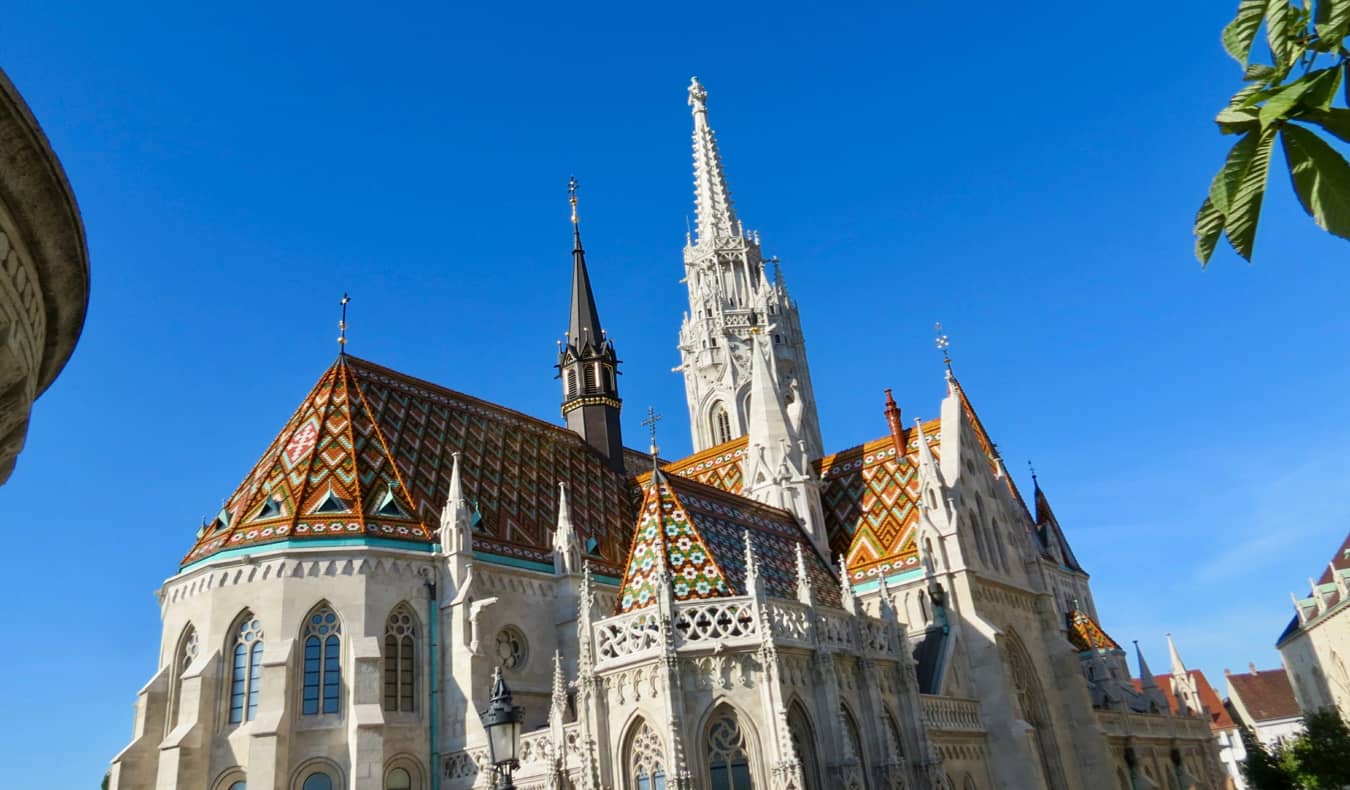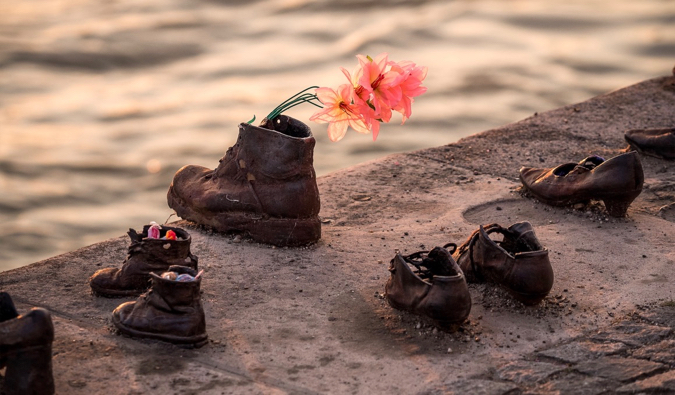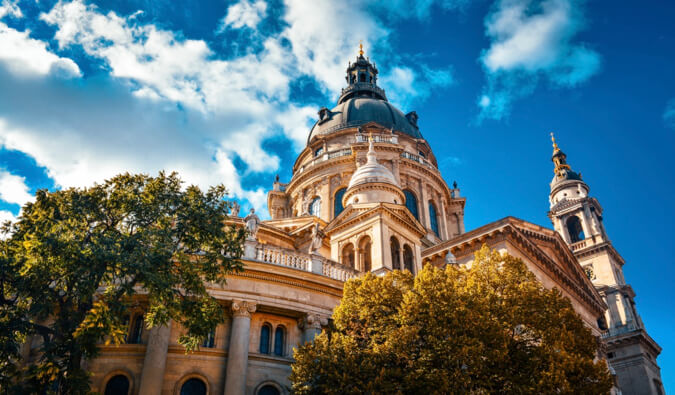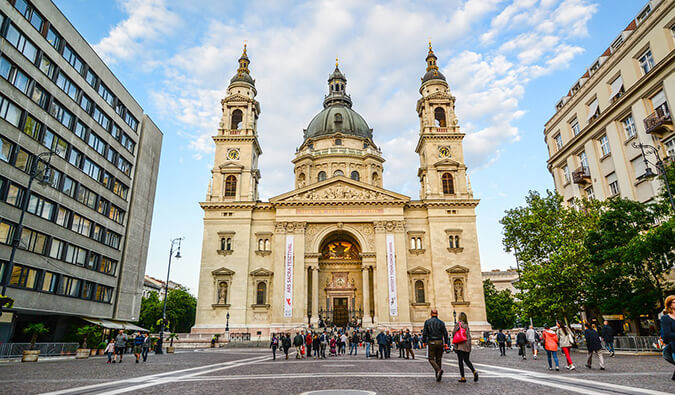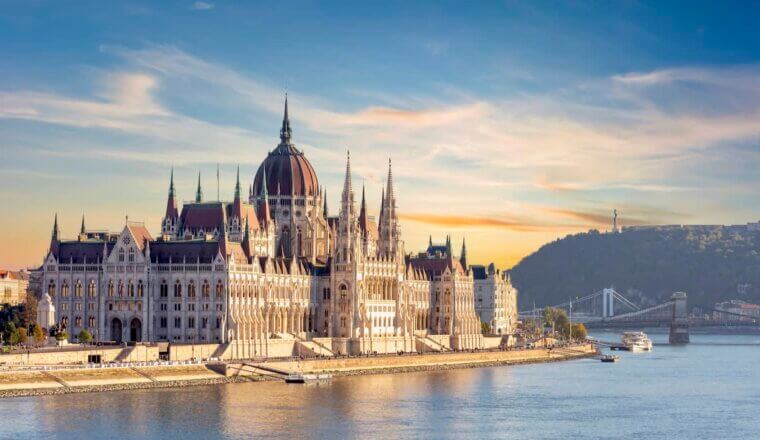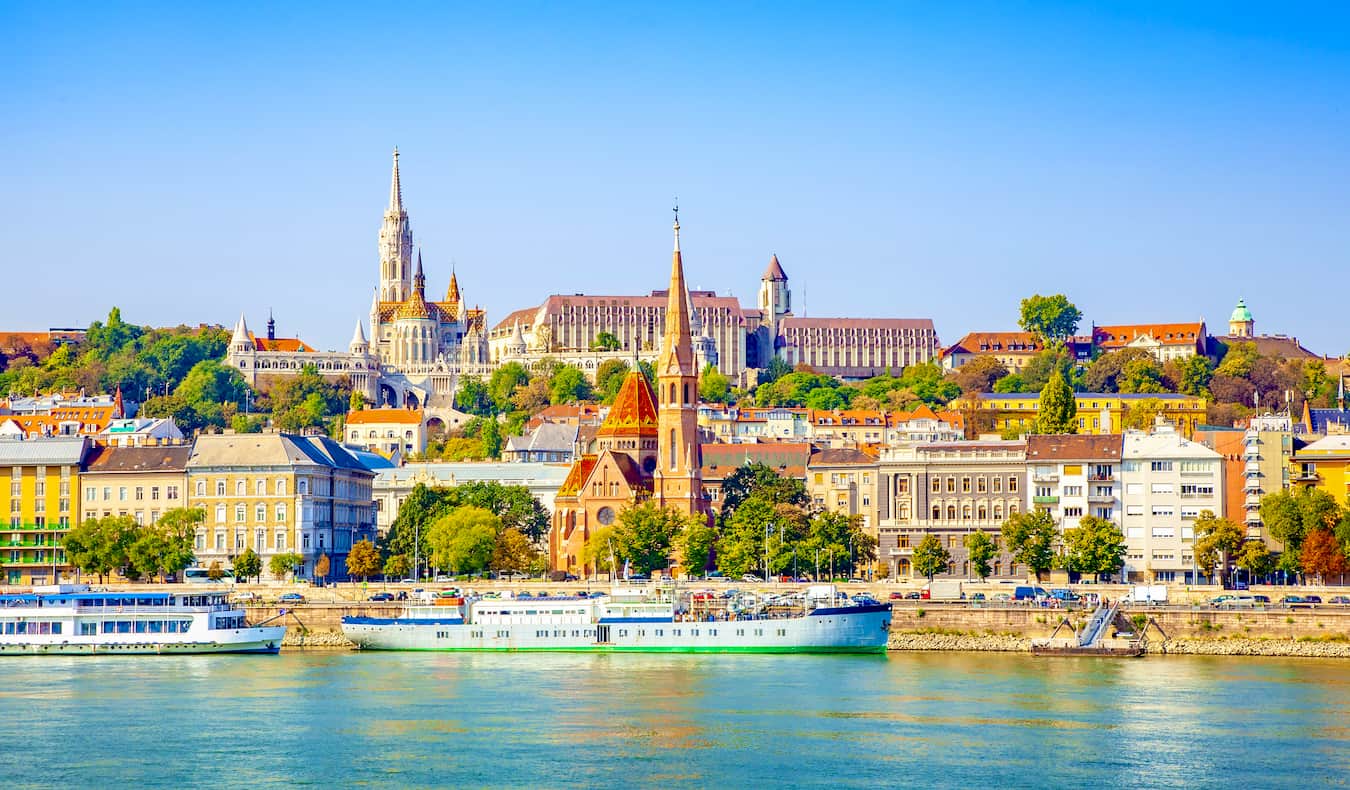
Last Updated: 1/8/24 | January 8th, 2024
When I first visited Budapest, the gritty, rundown streets charmed me. Budapest felt edgy. This was a city of underground bars in abandoned buildings, hearty food, and serious people.
Originally founded by the Celts around 1 CE, the region was later annexed by the Romans, who founded the city of Aquincum here (which present-day Budapest now covers). The Magyars eventually invaded the region after being pushed out of Bulgaria, founding the Kingdom of Hungary around the year 1000 CE. In 1361, the king built Buda Castle here, solidifying present-day Budapest as the capital and cultural hub of the kingdom.
In 1873, the towns of Buda and Pest were merged with the third area of the city, Óbuda (Old Buda), to form modern-day Budapest.
Over the years, I’ve seen the city change as tourists discovered this hidden gem and made it not so hidden anymore. And, while no longer as edgy as it once was, Budapest is still one of the best cities in Europe. It offers some of the best nightlife on the continent, beautiful districts, tons of spas and hot springs, stunning historic buildings and museums, and lots of green space.
To help you make the most out of your next trip, here are my top 25 things to see and do in Budapest.
1. Take a Free Walking Tour
Whenever I arrive in a new destination, I always take a free walking tour. It’s a budget-friendly way to see the main sights, learn about the destination, meet new people and ask any questions you have to a local expert. They’re a quick and easy way to get an overview of a city, which helps you plan the rest of your trip. Budapest has a number of good free tours available. Trip to Budapest and Generation Tours both offer excellent tours. Just be sure to tip your guide!
2. Soak at the Baths
Budapest is known for its thermal spa baths (it’s one of the best things about this city). There are more than 120 mineral hot springs here, many dating back to the Roman Empire.
The most popular is the Széchenyi Baths in City Park. With 18 pools, it’s the largest and most famous in Europe. The historic buildings that house the spa were built in 1913, and it’s a popular spot for locals and tourists alike. Don’t forget your bathing suit and flip-flops (you can rent towels and lockers).
Other baths, such as Lukacs and Gellert are also worth a visit.
Állatkerti krt. 9-11, +36-20 435 0051, szechenyifurdo.hu. Weekdays from 7am-8pm and weekends from 8am-8pm. Admission starts at 9,400 HUF on weekdays and 10,900 HUF on weekends (11,900 HUF on holidays).
3. Party at the Ruin Bars
The nightlife in Budapest is one of the best in Europe — and ruin bars are a big reason why. Located in the old Jewish Quarter (the District VII neighborhood), much of the neighborhood was left to decay after World War II. During the 90s, bars began to appear in the abandoned buildings in the area. Now, this underground scene is well on the map, but that doesn’t make these eclectic, arty, and funky spaces any less fun. Szimpla Kert (laid-back and quirky) and Instant-Fogas (nightclub vibes) are my favorites.
For a more detailed list, check out my post on the best ruin bars in Budapest!
Even if you’re not a big drinker, these bars are still worth seeing (Szimpla Kert especially; it’s one of the most unique bars in the world).
4. See Castle Hill
Located on the hilly Buda side of the city, this historic area is home to baroque houses and Habsburg monuments. Cobblestone streets and narrow alleys that hark back to the city’s medieval roots parallel panoramic views of Pest and the Danube. This section of the city is actually a UNESCO World Heritage Site, with the Old Town in the north and the massive 13th-century palace to the south. You can get up the hill by bus or funicular, but you often have to wait. The hill isn’t really that steep so I prefer to walk. It’s a beautiful spot to come at sundown.
5. Tour Buda Castle
Also in the Castle Hill area is Buda Castle (it’s more of a palace complex than anything else). The original complex was constructed in the 13th century, however, the huge Baroque palace that exists today was actually built between 1749-1769. Originally intended for the nobility, the palace was looted by the Nazis (and then the Soviets) during World War II.
Fun fact: Beneath the castle, Vlad the Impaler (colloquially known as Count Dracula) was imprisoned for 14 years. In the dungeon area, there is also a labyrinth which is super cool. There are some museums here as well (see below).
Szent György tér 2, +36 1 458 3000, budacastlebudapest.com. The courtyards are open 24/7 while the castle has hours that align with the museum and gallery (see below).
6. Explore the Hospital in the Rock
Over the years, this museum has served as a hospital, bomb shelter, prison, and nuclear bunker. Here you can learn about the impacts that World War II, the 1956 revolution (a countrywide revolution against the Soviets that was crushed after 12 days), and the Cold War had on the city and its people. Opened in 2008, it’s one of the most popular attractions in town. Admission includes a one-hour guided tour of the museums, which has all sorts of wax figures, tools, equipment, and furnishings.
On Friday nights, they offer a flashlight tour, where you explore the below-ground museum with the lights off using a flashlight.
Lovas ut 4/c , +36 70 701 0101, sziklakorhaz.eu/en. Open daily 10am-7pm. Admission starts at 9,214 HUF. Daily tours available in English.
7. Visit the Hungarian National Gallery
Opened in 1957, this museum focuses on Hungarian artists and history (of which I knew very little before my first visit). The gallery is located in Buda Castle, home to paintings and sculptures from the renaissance and middle ages, including wooden altarpieces from the 1400s. World War II damaged the palace severely and it was restored again in the 1960s before becoming home to the National Gallery in 1975. During your visit, you can also check out the underground Habsburg Palatine Crypt and climb to the top of the iconic dome for panoramic views of the city.
The gallery hosts rotating temporary exhibits too so check the website to find out what’s on during your visit.
1014 Budapest, +36 20 439 7325, mng.hu. Open Tuesday-Sunday 10am-6pm (last tickets sold at 5pm). Admission is 4,200 HUF.
8. Wander the Budapest History Museum
This museum covers four floors of Buda Castle and has the most amazing views across Budapest. It provides a comprehensive overview of the city’s entire history. It’s a must for anyone looking to get a more detailed look at the city’s 2,000-year past. The museum also offers an insightful overview of the historical sites around the city center and their role in Hungarian history, from prehistoric times right up to the present.
Be sure to get the audio guide as it provides a lot of good supplemental information. It’s worth the cost.
2 Szent Gyorgy Square, +36 1 487 8800 , btm.hu/en. Open Tuesday-Sunday 10am-6pm. Admission is 3,800 HUF).
9. See the Cave Church
In the 1920s, Catholic monks built this church in a large cave system that had been previously used by a hermit monk. Known as Saint Ivan’s Cave, the cave was used as a hospital during World War II. When the communists came to power after the war, they covered the entrance in concrete and executed the head monk. In 1989, as the Iron Curtain fell, the church was reopened and is now a popular place for tourists as well as a place of worship for locals. Get the audio guide to make the most out of your visit. There is a lot of history here.
Szent Gellért rakpart 1, sziklatemplom.hu/eng. Open Monday-Saturday 9:30am-7:30pm. Admission is 1,000 HUF which includes an audio guide.
10. Visit Matthias Church
This neo-Gothic Roman Catholic church is one of the most unique churches in Europe. I’ve literally seen hundreds of churches and cathedrals across the continent, and this is one of the most distinctive. The original church in this spot was built in the 11th century, though nothing remains of it (the current building was constructed in the 14th century and was heavily renovated in the 19th century).
During the Turkish invasion of the 16th century, it was converted to a mosque, which is why it has vibrant colors and designs that aren’t as common in European churches (the church has a colorful roof that almost makes it look like it was built from Lego). Once inside, you’ll see huge, vaulted ceilings and ornate décor. In the Royal Oratory, you’ll find the Matthias Church Collection of Ecclesiastical Art, which has stunning artifacts like chalices and replicas of the Crown of St. Stephen.
Szentháromság tér 2, +36 1 355 5657, matyas-templom.hu. Open Monday-Friday from 9am-5pm, Saturday 9am–12am, and Sunday 1pm–5pm. Admission is 2,500 HUF (2,900 HUF including the tower).
11. Visit Fisherman’s Bastion
Built between 1895-1902, this terrace consists of seven towers that look out over the river. Each one is meant to represent one of the seven Hungarian tribes that founded the city. The terrace was designed by the same architect who created the Matthias Church and provides stunning panoramic views across the Danube River. Competing legends say that the name comes from either the fact that the terrace overlooks the old fishermen’s guild or that the fishermen’s guild was responsible for protecting that area of the wall. No one is quite certain which is right. But either way, it offers beautiful views over the city (especially at sunset). Much of the area is free too.
Szentháromság tér, +36 1 458 3030, fishermansbastion.com. Open 24 hours a day. Admission is free, with an additional charge of 1,200 HUF to visit the upper turrets. Tickets for the upper towers are available from 9am-7pm (8pm in the summer).
12. Admire the Hungarian Presidential Palace
The Hungarian Presidential Palace has been the workplace of the president since 2003. Known as Sándor-palota (Alexander Palace), it’s not nearly as impressive as the surrounding buildings, but if you time your visit right you can see the changing of the guard ceremony at the top of each hour from 9am-5pm (excluding Sundays). Sometimes the palace is open for tours (but this rarely happens so don’t get your hopes up).
Szent György tér 1-2, +36 1 224 5000. Admission to the changing of the guard is free.
13. See Buda Tower
This reconstructed “tower” is all that remains of the Church of Mary Magdalene, which was originally built in the 13th century but was destroyed during World War II. When the Turks occupied the city between 1541-1699, the church was converted into a mosque. It reopened in 2017 and you can now climb the 172 steps that lead to the top. That said, the views from Castle Hill are just as good — and free — so I’d skip climbing the steps and just admire this historic tower from the outside.
Kapisztrán tér 6, budatower.hu/en. Open daily 11am-4pm. Admission is 1,500 HUF.
14. Walk Across the Chain Bridge
The Széchenyi Chain Bridge connects Buda with Pest and is a wrought-iron and stone suspension bridge. The bridge originally opened in 1849 but was damaged during World War II and had to be rebuilt. Spend some time strolling across the bridge and taking in the view. Don’t miss Gresham Palace, located on the Pest side. It’s an Art Nouveau building that is now a luxurious Four Seasons hotel.
15. Visit Parliament
Built on the Danube in 1902, this is the largest building in the country and home to the national assembly. This massive structure — which covers over 18,000 square meters — took almost 20 years to build after the three cities that make up modern Budapest (Buda, Pest, and Óbuda) united in 1873. The literal translation means “House of the Nation” or “House of the Country.” You can take guided tours of the building where you can learn about the history of the city and how the government of the country works. (If you plan to visit, purchase your tickets in advance as the lines can get really long.)
Kossuth Lajos tér 1-3, +36 1 441 4415, parlament.hu. Open daily 8am-6pm (4pm in the winter). Admission is 12,000 HUF for non-EU adults, 6,000 HUF for EU adults.
16. Stroll Along the Danube
After visiting Parliament, take a walk along the river. Head south to check out the promenade and its many green spaces and sculptures, including the sobering “Shoes on the Danube Bank,” a memorial honoring the Jews who were shot here during World War II. If you have a book or just want to take in the view, this is a reflective place to stop and relax.
17. Eat at the Great Market Hall
This is the oldest and largest indoor market in the country. Built in 1897, there is mostly produce, meats, baked goods, and candy on the ground floor while the upper floor is home to restaurants and souvenir shops. It has a lot of traditional places to eat, so be sure to walk around and explore first. Yes, it’s touristy (it’s the central market, after all), but I still found the food quite good (and affordable). Even if you don’t plan on buying anything, it’s still worth a quick visit to walk around.
They also have a guided Market Hall Tour with Tastings for 9,900 HUF on Saturdays at 11am (you can book directly on their website below).
Vámház körút 1–3, budapestmarkethall.com/great-market-hall-budapest. Open Monday 6am-5pm, Tuesday-Friday 6am-6pm, and Saturday 6am-3pm. Closed on Sundays. Admission is free.
18. Admire St. Stephen’s Basilica
This is the largest church in Hungary. Named after Hungary’s first king, the church consists of ornate architecture, gorgeous artwork, and is crowned by a massive dome. It was completed in 1905 after taking 50 years to build. Be sure to check out all the little chapels as well as the reliquary that is (allegedly) home to St. Stephen’s mummified right hand. If you’re there on a Monday, they have organ recitals.
Szent István tér 1, +36 1 311 0839, bazilika.biz. Open Monday from 9am-4:30pm, Tuesday-Saturday from 9am-5:45pm, and Sundays from 1pm-5:45pm. Entry is 2,300 HUF or 6,000 HUF to visit the church, tower, and treasury. Tours are available in English starting at 25,000 HUF.
19. See Dohány Street Synagogue
Also known as the Great Synagogue, this is the second-largest synagogue in the world (it seats 3,000 people). Built in 1854, the synagogue offers guided tours that shed light on the building and its place in the city’s history. You’ll learn all about the construction of the synagogue, Jewish life in the city, and much more. As a follow-up to your visit, check out Wallenberg Memorial Park (right behind the synagogue) and the nearby Hungarian Jewish Museum.
Dohány u. 2, +36 1-413 5584, jewishtourhungary.com/en. Hours vary from month to month; call ahead or check the website for details. Admission to the synagogue is 10,800 HUF.
20. Hike Gellért Hill
Gellért Hill, just south of Castle Hill, is the best place to watch the sunset (if you go for the sunset, take a flashlight for the trip home). There are also several monuments on the hill, such as the Liberty Statue, a bronze statue was erected in 1947 to celebrate the liberating Soviet forces who defeated the Nazis; the Statue of Queen Elisabeth, the Empress of Austria and Queen of Hungary who married Franz Joseph I; and the Statue of King Saint Stephen, Hungary’s first king, who helped establish the country as a Christian nation and provided a period of relative peace and stability.
21. Visit the Museum of Terror
Life in Budapest under the fascist and communist regimes was brutal. The building that houses this museum was used by the ÁVH (Secret Police) and Arrow Cross Party (the Hungarian Nazi party) during their reigns of terror. Over 700,000 Hungarians were killed or imprisoned by the Soviets, and the museum does an excellent and moving job of highlighting just how terrible their daily lives were. The museum’s permanent exhibits are spread over four floors and house all sorts of propaganda, weapons, and informative multimedia displays. They also host temporary exhibits too (for information on those, check the website for the most up-to-date information).
Andrássy út 60, +36 (1) 374 26 00, terrorhaza.hu/en. Open Tuesday-Sunday 10am-6pm. Admission is 4,000 HUF and you cannot order tickets online.
22. Stroll Around Heroes’ Square
Heroes’ Square (Hosök Tere) is the largest square in Hungary. Here there are statues of Hungarian kings and other historical figures, including the seven chiefs who led the Magyars (modern-day Hungarians) in the 9th century. The monument was built in 1896 to celebrate Hungary’s 1,000th anniversary and originally included Hapsburg monuments (as the Hapsburgs ruled the country at that time). The square is also home to the Millennium Monument, a large stone cenotaph dedicated to those who gave their life for Hungary’s independence. It’s located on the Pest side of the city.
23. Go Island-Hopping
There are a few islands on the Danube that you can visit to escape the city. The most popular is Margaret Island. It’s connected by the Margaret and Árpád Bridges and has a large park, swimming pools, and a musical fountain. Óbuda Island is known for its outdoor activities, including wakeboarding, jet skiing, and golf (there’s a driving range here). In August, they host the Sziget Festival of music and culture, which brings in thousands of people (there are over 1,000 performances during the festival).
24. Visit the House of Houdini
Born in 1874, Harry Houdini was a famous escape artist and illusionist. He was best known for his elaborate and sensational escape tricks, including escapes in handcuffs, chains, and even a grave where he was buried alive! Born in Hungary, this is the only museum in Europe dedicated to the Budapest native. The museum, which requires you to solve a small mystery before you can even visit, is home to original Houdini props and pieces of memorabilia, as well as props from the Houdini film starring Adrien Brody.
11 Dísz Square, +36 1-951-8066, houseofhoudinibudapest.com. Open daily from 10am-7pm. Admission is 3,400 HUF.
25. Day trip to Lake Balaton
Lake Balaton is the biggest lake in Central Europe (it’s often called the “Hungarian Sea”). It’s also a rich wine region and a hub for outdoor activities, like cycling. There are also thermal baths at the spa town of Hévíz, which is one of the main draws to the area (prices start at 4,500 HUF for three hours and 7,500 HUF for a day ticket). You can also hike around the extinct volcanic landscape in nearby Tapolca Basin, walk through lavender fields, and look for wildlife like deer and osprey in Balaton Uplands National Park. A round-trip train ticket from the city is about 3,700 HUF.
From its wild ruin bars to its relaxing spas, Budapest offers everything you can find in Western Europe — but for a fraction of the price. Plus, it also sees a fraction of the crowds that you’ll find in cities like London, Paris, and Prague.
With tons to see and do and budget-friendly prices, it should come as no surprise that Budapest keeps becoming more and more popular. It’s a city that won’t disappoint!
Get Your In-Depth Budget Guide to Europe!
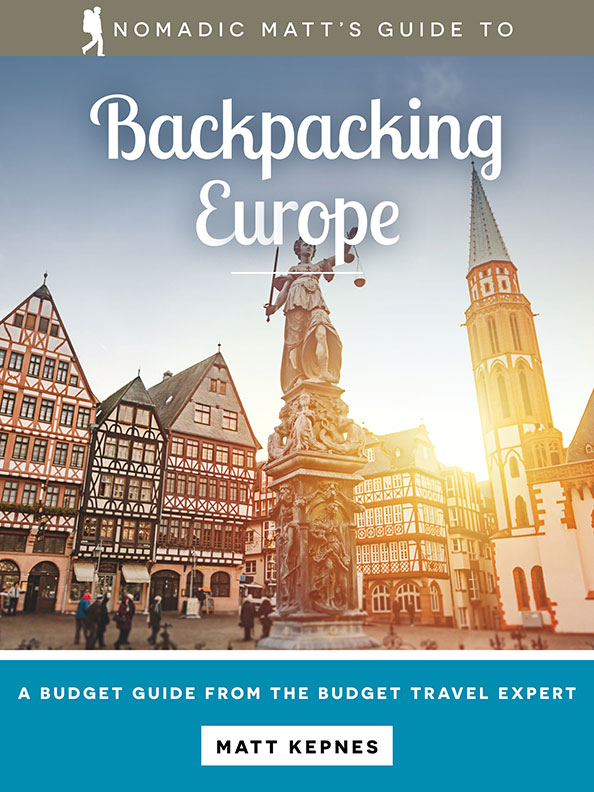
My detailed 200+ page guidebook is made for budget travelers like you! It cuts out the fluff found in other guides and gets straight to the practical information you need to travel while in Europe. It has suggested itineraries, budgets, ways to save money, on and off the beaten path things to see and do, non-touristy restaurants, markets, bars, safety tips, and much more! Click here to learn more and get your copy today.
Book Your Trip to Budapest: Logistical Tips and Tricks
Book Your Flight
Use Skyscanner to find a cheap flight. They are my favorite search engine because they search websites and airlines around the globe so you always know no stone is left unturned!
Book Your Accommodation
You can book your hostel with Hostelworld as they have the biggest inventory and best deals. If you want to stay somewhere other than a hostel, use Booking.com as they consistently return the cheapest rates for guesthouses and cheap hotels. My favorite places to stay in the city are:
If you’re looking for more places to stay, here is a complete list of my favorite hostels in Budapest!
Don’t Forget Travel Insurance
Travel insurance protects you against illness, injury, theft, and cancellations. It’s comprehensive protection in case anything goes wrong. I never go on a trip without it as I’ve had to use it many times in the past. My favorite companies that offer the best service and value are:
- SafetyWing (best for everyone)
- Insure My Trip (for those over 70)
- Medjet (for additional evacuation coverage)
Looking for the Best Companies to Save Money With?
Check out my resource page for the best companies to use when you travel. I list all the ones I use to save money when I’m on the road. They save you money when you travel too.
